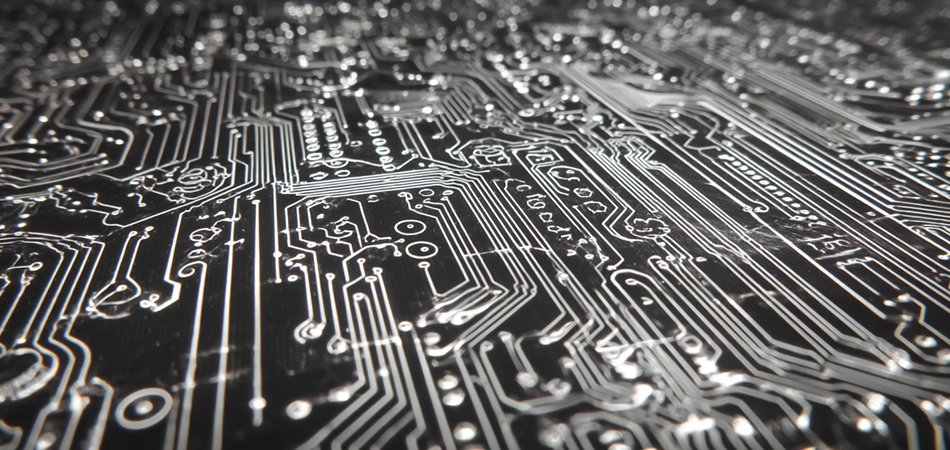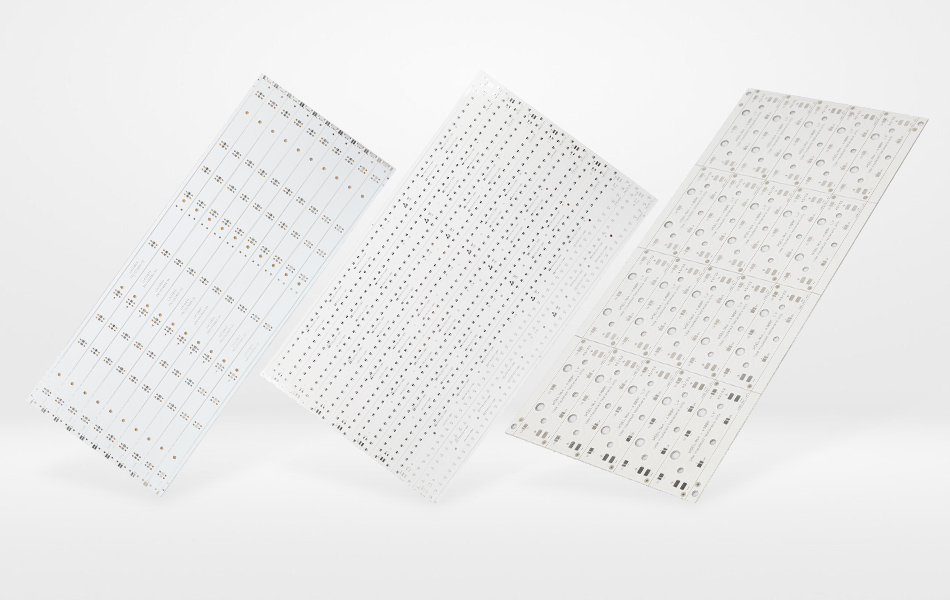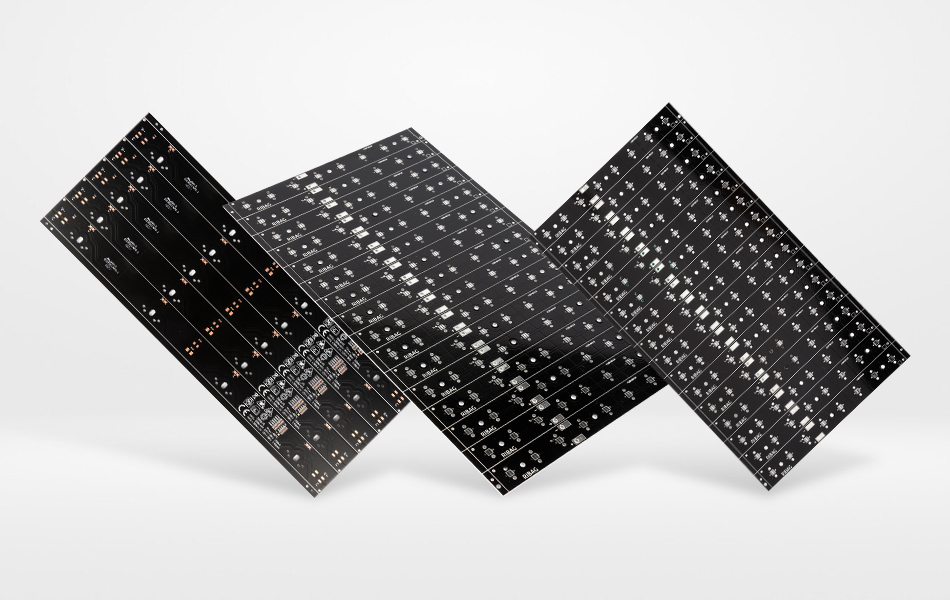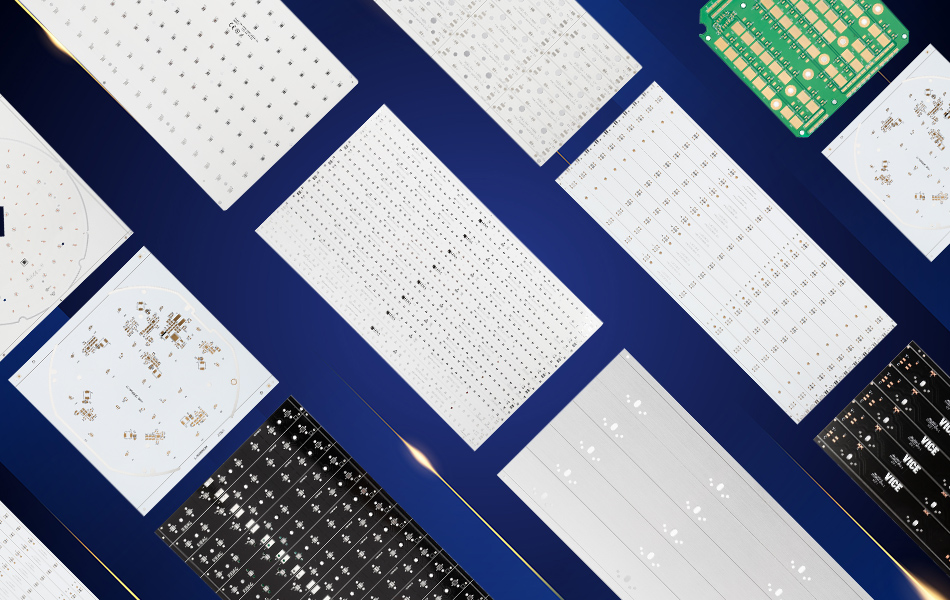-
- PCB TYPE
- PRINTED CIRCUIT BOARD PROTOTYPE ALUMINUM PRINTED CIRCUIT BOARD R&F PCB FPC HIGH FREQUENCY PCB HIGH-TG PCB HEAVY COPPER PCB HDI PCB PCB FOR LIGHTING METAL CORE PCB
time:Jul 02. 2025, 15:47:22
In the realm of advanced electronics, aluminum-based printed circuit boards (Al PCBs) incorporating blind and buried vias have emerged as a cornerstone of high-performance circuit design. These specialized via technologies address the dual challenges of signal integrity and thermal management in applications ranging from 5G communications to aerospace radar systems. This article delves into the technical synergies, design considerations, and manufacturing complexities of integrating blind and buried vias in Al PCBs, highlighting their role in enabling next-generation electronic systems.
Technical Foundations: Blind vs. Buried Vias
Defining Via Architectures
Blind Vias: Connect an outer layer to one or more inner layers without penetrating the board, ideal for surface-mounted component interconnection.
Buried Vias: Reside entirely within the board, linking inner layers without surface exposure, critical for multi-layer signal routing.
Functional Advantages in High-Frequency Circuits
Blind vias minimize signal path length, reducing inductance and capacitance in surface-layer connections. Buried vias, conversely, enable internal layer segmentation, isolating high-frequency signals to prevent crosstalk and electromagnetic interference (EMI).

Aluminum PCBs: The Thermal and Mechanical Advantage
Material Properties
Aluminum cores offer exceptional thermal conductivity, dissipating heat efficiently from power-dense components. This property is complemented by mechanical rigidity, ensuring via integrity under thermal cycling and mechanical stress—key factors in rugged electronic environments.
Thermal Management Synergy
The aluminum substrate acts as a heat sink, absorbing thermal energy from vias and distributing it across the board. This reduces thermal gradients, preventing via degradation and maintaining consistent electrical performance in high-power applications.

Design Strategies for Blind and Buried Vias in Al PCBs
Layer Stackup Optimization
Dielectric Selection: Low-loss materials like PTFE-based composites or ceramic-filled laminates ensure stable impedance control across frequency bands.
Core Thickness: Balancing thermal conductivity and mechanical strength, typical core thicknesses range from thin profiles for compact designs to thicker layers for heavy-duty thermal dissipation.
Via Placement and Routing
Blind Vias: Strategically placed beneath surface-mounted components to facilitate thermal conduction and signal routing.
Buried Vias: Routed within the board’s core to separate analog and digital domains, minimizing interference in mixed-signal RF designs.

Manufacturing Complexities and Innovations
Drilling and Plating Technologies
Laser Drilling: Precision laser systems create micro blind vias with minimal material damage, essential for high-density interconnects.
Sequential Lamination: Enables the formation of buried vias by bonding pre-drilled core layers, ensuring accurate alignment and connectivity.
Electroplating Processes: Uniform copper deposition in vias is critical for low-resistance pathways, with advanced plating techniques ensuring consistent wall thickness.
Via Filling and Surface Treatment
Thermally Conductive Fillers: Epoxy-based materials with ceramic fillers enhance thermal transfer in blind vias, reducing hotspots.
Anodization of Aluminum Cores: Improves adhesion between the core and dielectric layers, preventing delamination during thermal cycling.

Testing and Quality Assurance
Electrical Performance Validation
Vector Network Analysis (VNA): Measures insertion loss, return loss, and crosstalk to ensure vias maintain signal fidelity across operational frequencies.
Time-Domain Reflectometry (TDR): Identifies impedance discontinuities caused by via design, ensuring compliance with high-speed signaling requirements.
Thermal and Mechanical Reliability
Infrared Thermography: Maps temperature distributions to evaluate via-induced thermal hotspots under simulated load.
Thermal Cycling and Vibration Testing: Assesses via durability in harsh environments, ensuring long-term reliability in automotive, aerospace, and industrial applications.
Applications in High-Frequency Electronics
5G and mmWave Communications
Blind vias connect surface-mounted antennas to feed networks, while buried vias route intermediate frequency signals in multi-layer RF front-ends, enabling compact, high-gain antenna arrays.
Automotive Radar Systems
Buried vias isolate RF transceiver signals from digital control paths, while blind vias dissipate heat from power amplifiers to the aluminum core, ensuring reliable operation in temperature-fluctuating environments.
Medical Imaging Equipment
Al PCBs with mixed vias enable low-loss signal routing in high-frequency imaging systems, combining thermal management with precise signal integrity for diagnostic accuracy.
Emerging Trends and Future Innovations
Advanced Materials and Structures
Composite Aluminum-Ceramic Cores: Offer enhanced thermal conductivity and reduced thermal expansion, enabling smaller via pitches in high-density designs.
Graphene-Enhanced Dielectrics: Improve electrical performance with lower dielectric loss, ideal for ultra-high-frequency applications.
Digital Design Tools
AI-Driven Via Optimization: Machine learning algorithms predict via performance in complex layer stacks, optimizing placement for minimal signal loss and thermal stress.
3D Electromagnetic Simulation: Models via behavior in three-dimensional space, enabling precise design for phased array systems and complex RF modules.
Conclusion
Blind and buried vias in aluminum PCBs represent a transformative approach to high-frequency circuit design, addressing the intertwined challenges of signal integrity, thermal management, and mechanical reliability. As electronic systems continue to demand higher frequencies, greater power density, and smaller form factors, the synergy of these via technologies with aluminum substrates will remain indispensable. Through ongoing advancements in material science, manufacturing precision, and design methodology, Al PCBs with blind and buried vias will continue to drive innovation in wireless communications, radar systems, and beyond, shaping the future of advanced electronics.

Got project ready to assembly? Contact us: info@apollopcb.com



We're not around but we still want to hear from you! Leave us a note:

Leave Message to APOLLOPCB
